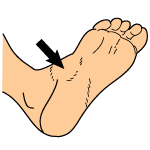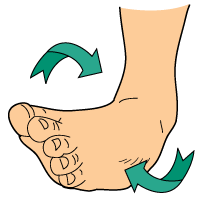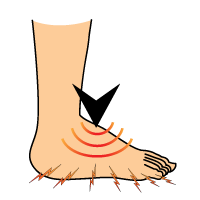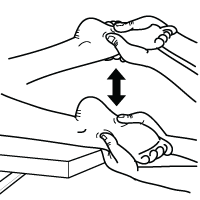What is Cuboid Syndrome?
Cuboid Syndrome (also called cuboid subluxation) occurs when there is a partial dislocation of the cuboid bone, usually caused by an ankle injury.
The cuboid is a small bone located on the outer side of the foot and is part of the calcaneocuboid joint.
 Causes
Causes
Common causes of Cuboid Syndrome include ankle sprains and repetitive strain on the calcaneocuboid joint over time. When the soft tissues surrounding the cuboid bone become damaged, this can force the bone out of it’s natural position, causing Cuboid Syndrome to develop.
Athletes such as ballet dancers and runners are particularly susceptible to Cuboid Syndrome.
Having flat feet and/or feet that overpronate also puts you at greater risk of developing Cuboid Syndrome.
Signs & Symptoms
- Pain on the outer part of the foot (may radiate down to toes and up to ankle)
- Pain that worsens when bearing weight on the foot
- Pain that worsens with activities that involve running and jumping
- Outside of foot may be tender, red & swollen
- Foot may feel weak
- Difficulty walking
- Limp while walking
Treatments
Physical Manipulation – A medical professional may be able to move the cuboid bone back into it’s regular position for you. If you have gout, arthritis, bone disease, or another foot condition or  injury, this may not be an option.
injury, this may not be an option.
Taping – Using kinesiology tape (also called sports tape) can help to reduce stress on the soft tissues surrounding your cuboid bone and provide your foot with some support.
RICE – Rest, Ice, Compression and Elevation will help relieve the pain, swelling and inflammation you’re experiencing.
Exercises – Motion and strength exercises for the foot can help prevent weakness and stiffness. Once you are further along in the healing process, balance exercises should also be introduced.